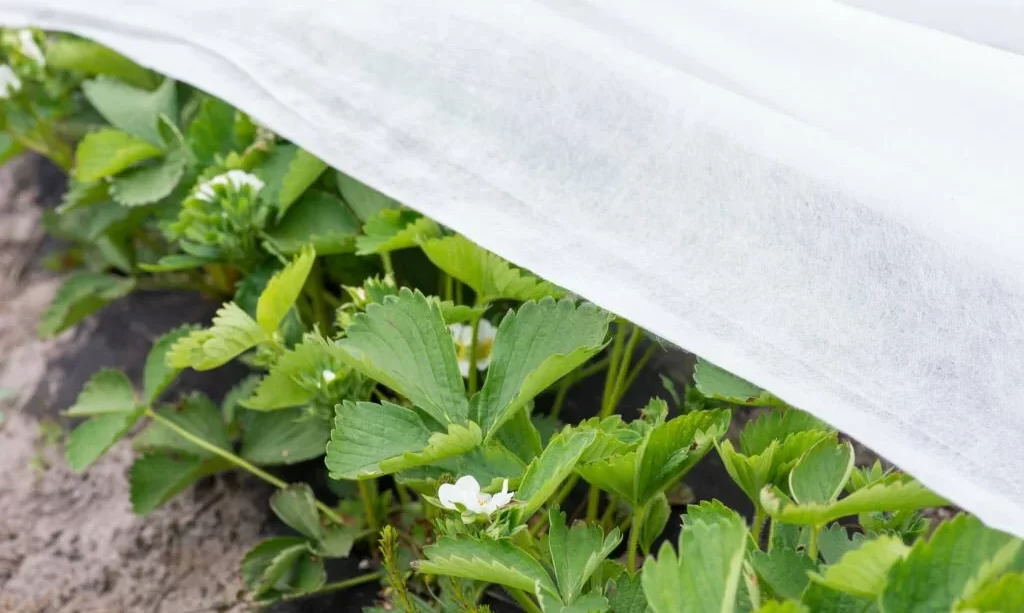Strawberries, with their sweet and juicy fruits, are a cherished addition to many gardens. To protect these delectable gems from the vagaries of weather, pests, and birds, gardeners often cover their strawberry plants. However, knowing when and how to uncover strawberries is crucial to ensure a successful harvest. In this article, we’ll explore the art of uncovering strawberries, focusing on the best practices and timing for unveiling your strawberry plants. Whether you’re a novice or an experienced gardener, understanding the right moment to uncover your strawberries can make all the difference in the quality and quantity of your yield.
- All season plant covers provide a barrier to protect all types of plants against troublesome animals like rabbits, deer, bird, snails, pest.
- Stainless steel frame structure and 4 sturdy garden stakes, hold down the plant protector firmly.
- The garden mesh netting protect your seedlings, seeds, strawberry, and vegetables, and still allow them to be watered and get sunshine.
- Collapsible plants umbrella opening design for super easily use. Comes with waterproof drawstring bag for easy storage.
- Size measures 42 x 42 x 21 cm/ 17 x 17 x8 inches when it unfolded. Easy to clean, spot clean with a little soap water will works good.
Purpose of Covering Strawberries
Covering strawberry plants is a common practice among gardeners, and it serves several important purposes:
- Protection Against Frost: One of the primary reasons for covering strawberries is to shield them from late spring frosts, which can be detrimental to the delicate blossoms and emerging fruit. Unprotected strawberries are vulnerable to frost damage, which can result in reduced yields or even the loss of the entire crop.
- Pest and Bird Control: Covers act as a barrier against a variety of pests, including insects and birds. Insect pests like aphids and thrips can damage both flowers and fruit, while birds are notorious for plucking ripe strawberries right from the plant. By keeping these nuisances at bay, covers help preserve the fruit’s quality and quantity.
- Extended Growing Season: Covering strawberries can extend the growing season, allowing you to enjoy fresh strawberries earlier in the year or even well into the fall. This extended season is particularly valuable in regions with variable weather conditions.
Spring Uncovering
In the world of strawberry gardening, the arrival of spring is a moment of anticipation and action. Knowing when to uncover strawberries in the spring is crucial for a successful growing season. Here are some essential points to consider:
- Optimal Timing: The ideal time to uncover strawberries in the spring depends on your local climate and the specific frost dates in your area. In many regions, late March to early April marks the transition from winter to spring, but it’s important to be aware of your local frost dates. To uncover your strawberries, you’ll want to wait until the danger of frost has mostly passed.
- Local Frost Dates: Before you rush to uncover your strawberry plants, consult your local frost dates, which can vary widely based on your geographical location. Your local agricultural extension office or a trusted gardening resource can provide information on these dates. Keep in mind that frost dates may differ for early and late spring.
- Gradual Uncovering: When the threat of frost has diminished, it’s time to gradually uncover your strawberry plants. This means you should avoid hasty removal of covers. Instead, expose the plants to sunlight and fresh air incrementally over a few days. This acclimation process helps the plants adjust to the changing conditions without experiencing shock.
By understanding the importance of covering strawberries and knowing when to uncover them in the spring, you’ll be better equipped to safeguard your strawberry crop and enjoy a delightful harvest. In the next sections, we’ll delve into uncovering strategies for other seasons, pest protection, and the post-harvest unveiling process.
After Winter Protection
Uncovering strawberries after they’ve been sheltered through the winter is a pivotal moment for gardeners in colder regions. Here’s what you need to know:
- Removal of Winter Insulation: In regions where winter protection is essential, gardeners often use mulch, straw, or other insulating materials to shield strawberries from harsh temperatures. As the weather begins to warm and the risk of extreme cold lessens, it’s time to uncover your strawberry plants. Gently remove the protective layers and expose the dormant strawberry crowns to the increasing sunlight.
- Watch for Weather Trends: Pay close attention to the weather forecast and local temperature trends. The goal is to time the unveiling to coincide with a period of relatively stable and warmer weather. Removing winter insulation prematurely, when there’s still a threat of freezing temperatures, can harm the emerging growth.
After Frost Threat
When the threat of spring frosts still lingers, protecting your strawberries with frost blankets may be necessary. Here’s how to manage the uncovering process in such situations:
- Monitoring Weather Conditions: Stay vigilant about the weather. Keep an eye on nighttime temperatures, especially during the late spring when frost can be a concern. If the forecast indicates a late frost event, it’s wise to keep your strawberries covered with frost blankets until the risk has passed.
- Gradual Uncovering: Once the frost threat is no longer imminent, you can begin the process of uncovering your strawberries. Similar to the spring unveiling, do it gradually. Lift one corner of the frost blanket or row cover and secure it, allowing some air and sunlight to reach the plants. After a day or two, uncover a larger portion until the entire bed is exposed.
Gradual Uncovering
Whether you’re uncovering strawberries in the spring or after a frost threat, the gradual approach is vital to the well-being of your plants:
- Acclimating Plants: Gradual uncovering helps strawberry plants acclimate to their new environment. Sudden exposure to direct sunlight and open air can shock the plants, causing stress and potential damage. By slowly introducing them to these conditions over several days, you allow the plants to adapt without harm.
- Preventing Sunscald: Sunscald, a condition where strawberry fruit or leaves become damaged due to intense sunlight, can be a concern during the uncovering process. Gradual exposure helps mitigate this risk, as the plants have time to adjust to the increased light and heat.
By understanding the crucial steps involved in unveiling your strawberries after winter protection or frost threats and appreciating the significance of gradual uncovering, you’ll be better equipped to ensure your strawberry plants transition smoothly into the growing season. The next sections will cover uncovering strawberries after the threat of pests, birds, and the post-harvest process.
Pests and Bird Protection
Protecting your strawberry plants from pests and birds is an ongoing concern. Here’s how to manage these issues:
- Continued Protection: After the initial spring and frost-related uncovering, it’s important to continue protecting your strawberries from pests and birds throughout the growing season. The use of fine netting or bird nets can effectively shield your plants from feathered foragers, and row covers can be used to deter insect pests while still allowing for pollination.
- Monitoring and Intervention: Regularly inspect your strawberry plants for signs of pest damage. Early intervention can prevent significant harm. If you notice any issues, address them promptly, whether it’s by removing pests by hand, applying natural remedies, or adjusting your protective covers.
Post-Harvest Uncovering
Uncovering strawberries after a successful harvest is an important step towards preparing your plants for the next growing season:
- Post-Harvest Care: Once you’ve enjoyed the fruits of your labor and harvested your strawberries, it’s time to think about the post-harvest process. Remove any remaining fruit, as overripe strawberries can attract pests. Inspect the plants for any signs of disease or pests and address them as needed.
- Trimming and Maintenance: Post-harvest is an excellent time for a bit of maintenance. Trim back any dead or damaged foliage to encourage new growth. If your strawberry patch is due for renovation, this can also be the right time to thin out overcrowded plants or establish new rows.
- Fall Covering: Depending on your climate, you may need to prepare your strawberry plants for winter once again. As fall approaches, consider covering your strawberry bed with straw or mulch to protect the crowns from cold temperatures and frost.
Conclusion
Uncovering strawberries is a delicate but vital aspect of strawberry cultivation. Knowing the right time to reveal your plants, whether in the spring, after winter protection, or following frost threats, is crucial to a successful growing season. Gradual uncovering helps acclimate your strawberries, preventing stress and potential damage. While protecting your plants from pests and birds is essential throughout the season, post-harvest care and fall preparations contribute to the overall health and longevity of your strawberry patch.
By applying the insights and strategies provided in this article, you’ll be well-equipped to manage the uncovering of your strawberry plants effectively, ensuring that your next harvest is as delightful and abundant as the one before.




